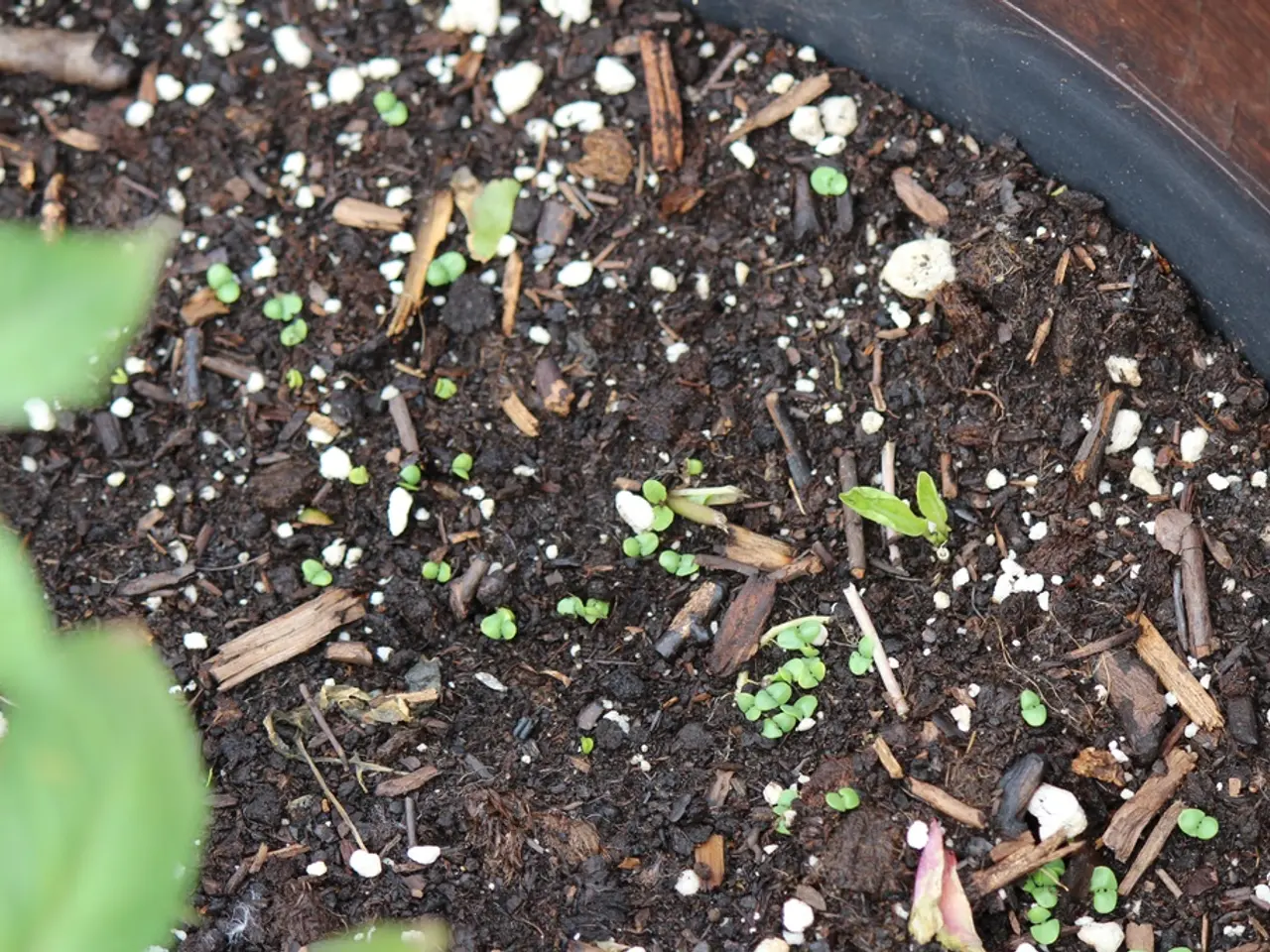Commencing and expanding operations at a Soil Mixing Plant
In the realm of gardening, understanding the importance of soil amendments and potting mixes is crucial for nurturing healthy, thriving plants.
Potting mix, superior in drainage and aeration, makes it ideal for container plants. For those growing in outdoor gardens, raised beds, or in-ground planting, potting soil is a more suitable choice.
When it comes to improving water retention and soil structure, organic matter reigns supreme. Compost, well-rotted manure, leaf mold, and sphagnum peat moss are key effective amendments. These materials enhance soil texture by increasing moisture-holding capacity, improving aeration, and fostering beneficial microbial activity.
Compost, for instance, adds organic matter that breaks up compacted soils, increases water retention, and feeds beneficial microbes that release nutrients to plants. Well-rotted animal manure, particularly from horses, sheep, chickens, or cows, enriches sandy soils with organic content, helping retain moisture and nutrients for longer periods.
Leaf mold and decomposed seaweed serve as excellent organic mulches, particularly in sandy soils, where they improve moisture retention and help prevent erosion. Sphagnum peat moss, with its fibrous structure, is exceptionally good at enhancing soil water retention, improving aeration, preventing soil compaction, and providing organic matter that supports microbial life and improves nutrient availability over time.
For clay soils, gypsum and lime can be beneficial. Gypsum helps to break up heavy, compacted clay, improving drainage and reducing compaction, while lime can improve structure by binding particles and promoting better drainage.
In addition to these amendments, planting cover crops or green manures like clover or rye can naturally add organic matter, prevent erosion, stimulate soil organisms, and improve soil structure over time.
When choosing a soil amendment, consider the desired results and the specific needs of your plants. Remember, organic amendments are derived from living materials, while inorganic amendments are typically mineral or man-made.
It's also essential to ensure adequate drainage to prevent root rot and other moisture-related issues. Adding organic matter such as compost, well-rotted manure, or leaf mold is beneficial. However, be aware that some ingredients commonly found in potting mixes and potting soils can harm the environment.
Soil tests can help determine the specific needs of your soil before applying soil amendments. Testing soil is essential to determine its pH level, nutrient content, and texture. Selecting a soil type that meets the specific nutritional requirements of plants is important.
In the quest for sustainable alternatives, coconut coir and organic rice hulls are viable options for drainage, serving as sustainable alternatives to peat moss. Loamy soil, a combination of sand, silt, and clay, is considered ideal for many plants. Perlite and vermiculite are added to improve drainage and aeration in your soil mix. Adjusting the ratios of ingredients in your soil mix depends on the specific needs of your plants.
Lastly, it's important to note that different plants have specific soil requirements for optimal growth. For instance, clay soil is dense and retains moisture and nutrients but tends to drain poorly. On the other hand, sandy soil has larger particles, making it well-draining but less effective at holding moisture and nutrients.
In summary, regularly incorporating organic amendments such as compost, peat moss, rotted manure, and leaf mold, supplemented by soil-specific minerals like gypsum for clay soils, is the most effective approach to enhancing water retention, soil structure, and overall plant growth conditions.
Data-and-cloud-computing advances could revolutionize gardening and home-and-garden practices by providing real-time soil analysis and plant health monitoring, enabling gardeners to make informed decisions about lifestyle choices such as soil amendments and planting strategies.
With the integration of technology like dual-band spectral sensors, cameras, and machine learning algorithms, a home gardener may gain access to personalized gardening recommendations based on the specific needs of their plants, ultimately leading to a more efficient and sustainable home-and-garden lifestyle.




